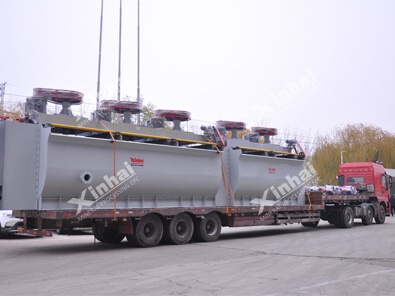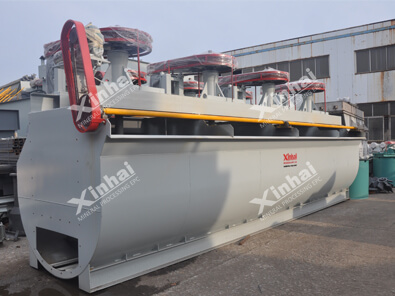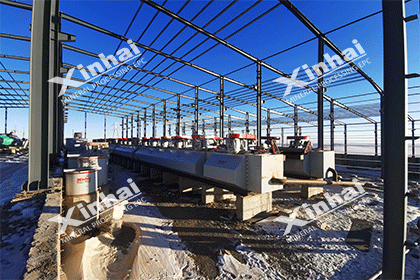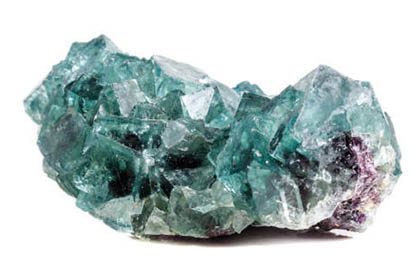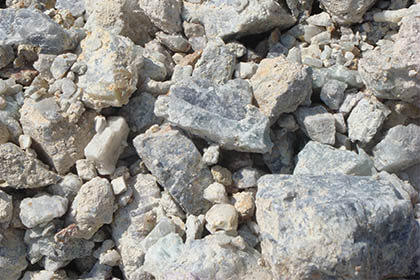7 Fluorite Beneficiation Method Standards
 Shirley
Shirley
 Dec 19, 2022
Dec 19, 2022
 1742
1742
If you want to know more details about equipment, solutions, etc, please click the button below for free consultation, or leave your requirements!
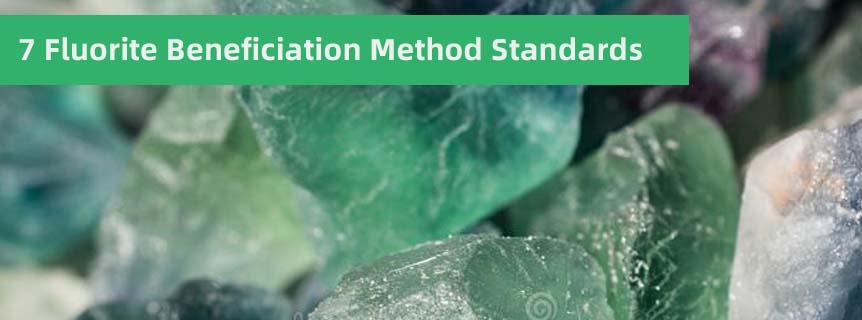
Fluorite beneficiation technology is a technology to separate gangue and useful components according to the characteristics of fluorspar ore and the occurrence state of useful components. According to the physical and chemical properties of different minerals in fluorite ore, the fluorite ore is crushed and ground first. Then use gravity separation method, flotation method, etc. to separate useful fluorite minerals from gangue minerals. And make all kinds of symbiotic useful minerals separated from each other as much as possible, remove or reduce harmful impurities, so as to obtain raw materials required for smelting or other industries. Fluorite beneficiation technology enriches useful components, reduces consumption of fuel and transportation in smelting or other processing processes, and enables economical utilization of low-grade fluorspar.
The scope of application of fluorite beneficiation technology is single-type fluorspar, quartz-type fluorspar, sulfide-type fluorspar, calcite-type fluorspar, barite-type fluorspar, silicalite-type fluorspar, and carbonate-type fluorspar. .
01 Single-type fluorite beneficiation technology
BackSingle-type fluorite is almost composed of a single fluorite mineral, and also contains a small amount of quartz and calcite, mostly in the form of veins. The grade of calcium fluoride is generally 35%-40%. A small number of fluorspar with more than 65% can be directly used as smelting-grade fluorspar resources. But the reserves are less and the degree of development is higher. Due to the simple composition of the ore, the mono-fluorite beneficiation technology generally only needs to use basic oleic acid for simple flotation, roughing, sweeping, and several times of beneficiation to obtain high-grade concentrate products.
02 Quartz-type fluorite beneficiation technology
BackQuartz-type fluorite uses fluorite and quartz as the main minerals, and the content of fluorite can reach 80% to 90%, containing a small amount of calcite, barite, and sulfide. The mineral composition of quartz-type fluorite is relatively simple and easy to separate. But it is easy to mix quartz concentrate in fluorspar concentrate. Therefore, silicon reduction in concentrate has become the focus of separation of quartz fluorite. Quartz-type fluorite beneficiation technology generally adopts flotation method for separation, and the grinding operation has a great influence on its separation index. The fine-grained quartz-type fluorite generally adopts the stage grinding and separation process to ensure that the quartz and fluorite monomers are dissociated without causing over-grinding. In flotation, sodium carbonate was used as pH regulator, oleic acid and oxidized paraffin soap were used as collectors, and water glass was used as inhibitor. High-grade fluorspar concentrate can be identified through multiple separateions.
03 Sulphide-type fluorite beneficiation technology
BackSulfide-type fluorspar has a similar mineral composition to quartz-type fluorspar, but sulfide-type fluorspar contains more heavy metal sulfides. When developing, not only the recovery effect of fluorspar, but also the comprehensiveness of other metal minerals should be considered. Recycle. Fluorite beneficiation technology generally adopts the method of preferentially flotation metal sulfide and then flotation fluorite for this kind of fluorite minerals. Among them, metal sulfide uses sulfide collectors, and fluorite uses fatty acid collectors. On the basis of the flotation process, methods such as roasting and leaching can also be used to separate metal sulfides and fluorite.
04 Calcite-type fluorite beneficiation technology
BackThe main minerals of calcite-type fluorite are calcite and fluorite, of which the content of calcite is more than 30%, and it also contains metal sulfide minerals such as galena, sphalerite and pyrite.
Calcite and fluorite are both calcium-containing minerals with similar physical and chemical properties, and it is difficult to separate them. Calcite can be inhibited by inhibitors such as water glass, salted water glass, acidified water glass, sodium hexametaphosphate, lignosulfonate, dextrin, tannin, and tannin under different pulp pH values. A fatty acid collector was used as a fluorite collector to achieve the separation of calcite and fluorite.
05 Barite type fluorite beneficiation technology
BackBarite-type fluorite is mainly composed of barite and fluorite, and the content of barite is between 10% and 40%. Barite and fluorite are vertically zoned in the ore body, associated with pyrite, galena, sphalerite, and a small amount of calcite. Barite and fluorite are similar in buoyancy, and fluorite beneficiation technology generally adopts the method of mixed flotation. Sodium carbonate is used to adjust the pH value, and water glass is used as an inhibitor to obtain a mixed concentrate of barite and fluorite, and then flotation to separate barite and fluorite.
06 Silica-type fluorspar beneficiation technology
BackSilica-type fluorite is formed by sedimentation, in which fluorite is generally distributed in shale, parent quartz schist, quartzite in siliceous rocks. This kind of ore has a lot of primary slime, and the embedded particle size is uneven. The fluorite beneficiation technology uses the conventional flotation method to obtain a high silica content in the concentrate. It can be improved by adding chemical pretreatment in the grinding stage, and then flotation, which can effectively suppress the silicate gangue minerals in this type of minerals.
07 Carbonate-type fluorite beneficiation technology
BackCarbonate-type fluorite is also formed by sedimentation. Fluorite is distributed in limestone and marble in fine granular form, and forms a granular joint mosaic structure or variable crystal structure with calcite or dolomite, and some form stripes, bands, micro layer to lamellar structure. The main minerals are fluorite and calcite, and the calcium carbonate content is about 30%. Due to the similar flotation properties of fluorite and calcium carbonate, this type of fluorite is more difficult to separate. When fatty acids are used as collectors, high-temperature slurry treatment at 50-60°C is required, and calcium inhibitors are added. However, this method has a large investment cost, a large floor area, and high production costs.
 +86 183 3575 8886
+86 183 3575 8886 pinklaurabao@gmail.com
pinklaurabao@gmail.com




 Message
Message Chat Now
Chat Now


